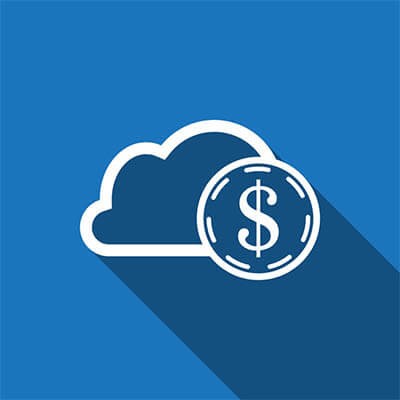For this experiment, we’re going to assume that we are starting from scratch. The optimism and cautious excitement that goes into starting a new business endeavor is palpable. Let's assume for our purposes that you’ve determined that you need to support the following applications:
- Voice over Internet Protocol
- Line of business applications
- Productivity applications
- HR and operations software
- Storage (enough to support above)
- File sharing
- Backup
It’s not hard to ascertain the surface costs of implementing these technologies, but when trying to figure out the total cost of ownership, it may be a little more difficult. Objective comparison of the two platforms has to begin at their core needs. On one hand, In-house computing comes with several, including power, maintenance, management, and redundancy (and the management and maintenance of that platform), while cloud computing may need enhanced bandwidth and redundancy to work for a business. These costs have to be figured in when trying to plan your next steps.
Then there is the question of who is going to use your data, and what kind of protections need to be put in place as a result of that qualification. What compliance regulations does your organization have to meet? How many users does the network and infrastructure have to support? What software do you need to run? There are literally dozens of questions you have to ask before making any definitive decisions about what kind of hardware you are going to need, let alone what kind of hardware solutions you plan on using.
Once you’ve ironed out the particulars, you will then have to make the big choice. Do you want to buy physical hardware, cloud-based hardware, or some combination of both? Let’s analyze all three options:
In-House Computing
The first thing you have to be cognizant of is that once you decide that your organization needs in-house server infrastructure, you have to know that it is going to cost you a pretty penny. In order to support a full-scale communications solution, all the applications your business uses to do business, email, and backup you are looking at a seriously hefty price tag. Not only are you looking at a few thousand dollars per server, costs that are incurred in configuring the servers, warranties, and maintenance to that server could push the cost into untenable territory, especially if there isn’t a good deal of upfront capital available.
Beyond all that there are HVAC and security costs that need to addressed the first time around. The biggest expense, by far, is the cost of management. If you outsource your IT services management to a company like Coleman Technologies, you may be able to mitigate some of the recurring costs and get expert management, but ultimately the facts point to on-premise hardware rollouts costing a substantial amount more than utilizing cloud, especially with today’s IaaS costs.
Implementing an in-house server room does provide you with some pretty stark benefits, however. They include complete management over the systems within, the resulting comprehensive data security, and access to data without an Internet connection. It also front-loads the costs associated with the environment, so if the big capital expenses don’t cut into your operational budget considerations, you will be paying less per month. The infrastructure costs (which are fixed costs) and the management and maintenance of it, and operational costs (that are very often variable), all have to be taken into consideration, as does your organization’s regulatory compliance needs.
Cloud Computing
For the start-up that doesn’t have any overreaching data compliance issues, utilizing cloud computing is a no-brainer. Not only are there limited set up costs, there are so many different service-based computing plans that it is now possible to strictly use the cloud for all of your organization's central computing.
For the established company, it may be a little more difficult, so before we go “all hail the cloud!” on you, we have to admit that there are plenty of considerations you have to make if you were to go ahead with a completely virtualized computing infrastructure for your business. Here are a few:
- Migration Time and Cost: Getting started with cloud computing may not come with the enormous capital costs that an inhouse server would, but there is cost, especially if you are migrating data. For an established business to move from physical servers to cloud infrastructure there is a substantial investment. It takes a lot of bandwidth and time to move all if an organization’s data over, and in doing so, you will likely incur a fair amount of cost.
- Dependability and What Uptime Really Means: Cloud providers like to measure their effectiveness in uptime; and, in doing so, don’t properly represent what customers want from their cloud provider. Businesses need ubiquitous access to data and applications stored on a cloud construct, and sometimes that can be a problem. The VM running the server may be up, but if there isn’t access to critical information and applications, a business deals with their own downtime, which is a major problem.
- Problems Estimating Costs: The cloud’s cost to a business seems simple enough, but a lot of business owners do a poor job of estimating the true cost of the service. With cloud computing pricing costing businesses so many cents-per-service-unit, they often fail to multiply this cost over months and years. By moving the least utilized applications over first, a company can save more money than just moving it all over at once.
- Trusting Your Architect: Well before cloud implementation, a company would have a cloud architect make them a map (of sorts) so that decision makers can see how the data flows. A problem arises when you’ve trusted the plan and mid-implementation, the migration team wants to change everything. To avoid a complete cloud migration failure, your best bet is to consult with the architect to make certain that everything goes to plan.
- Cloud security: For companies that migrate over to the cloud, they will have to know beforehand that all of the solutions they had deployed to protect their systems from threats are probably not going to be deployed by the cloud provider. As a result, it may initially feel as if the cloud construct is lacking security. Hiring a third-party to test your security will go a long way toward alleviating (or reaffirming) the concerns you may have about your cloud’s security.
As costs go, it’s pretty evident after considering all the factors, that deploying new infrastructure is always going to be costly. An organization can save money by moving to the cloud as long as the migration is done properly and meets all the file sharing, data security, and deployment needs that an organization has. In fact, most organizations have some sort of cloud project on the books for this very reason. The benefits outweigh the detriments for a lot of what companies do.
The Hybrid Approach
Nowadays, the Hybrid Cloud approach is becoming more popular. As data regulations increase and legacy software is still mightily functional, the best option is often to deploy both a cloud platform and keep an on premise server. Essentially, finding ways for the two to work in unison is called a hybrid cloud. While this seems like a match for nearly every business, it comes with a great deal of design and implementation headaches, and can cause significant cost overruns.
In order to design and deploy an effective hybrid cloud, you first have to know what the potential pitfalls can be. Two include:
- Utilization uncertainty: When moving part of an organization’s data and infrastructure to the cloud, there should be a baseline of utilization that is acceptable. If you overplanned for cloud utilization, you could be looking a pretty hefty bill in the face for computing resources your organization will never use.
- Development costs: The two computing constructs often won’t “play nice” and as a result you may be looking at substantial development costs during the integration. These costs are variable and are difficult to plan for, so like everything else IT, plan to spend more than you will and you won’t be left disappointed.
To solve the challenges that come with significant hybrid cloud costs, many organizations will abandon the idea, but really it’s about simplifying the whole process. New strategies, practices, and products are being formed that will simplify the hybrid cloud process, while allowing an organization to get the most out of their IT infrastructure. It won’t be long before there will be hybrid cloud services that will marry the two ends into one secure and dynamic IT infrastructure. Until then, however, controlling your computing costs, no matter the platform, will take careful consideration and thoughtful planning.
At Coleman Technologies, we have years of experience designing, implementing, managing, and supporting powerful IT infrastructures for businesses of all sizes. To learn more about cloud computing, including hybrid cloud implementations, reach out to us today.





